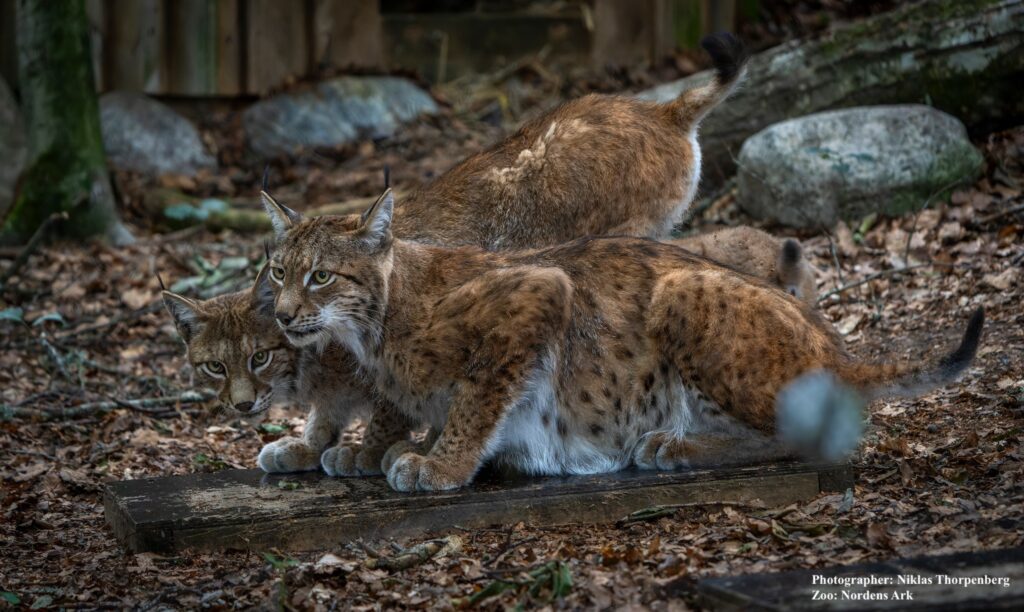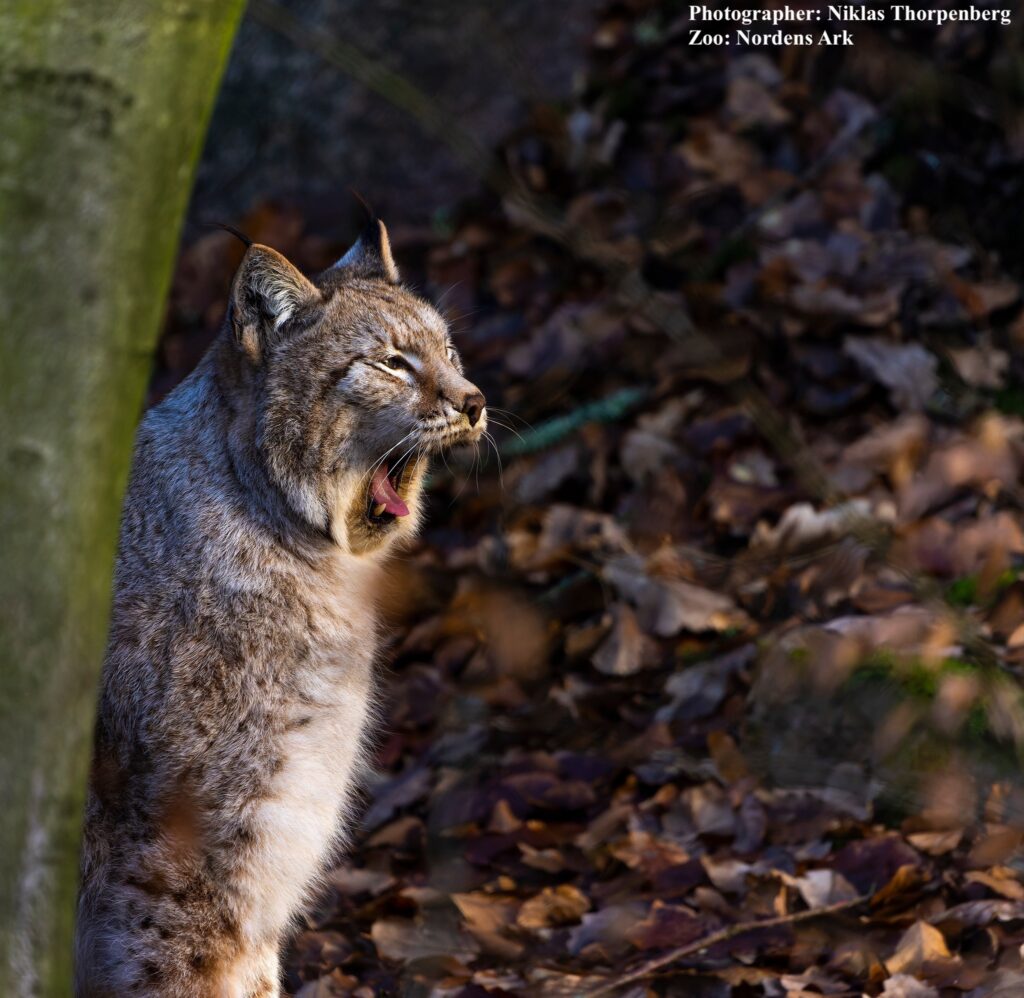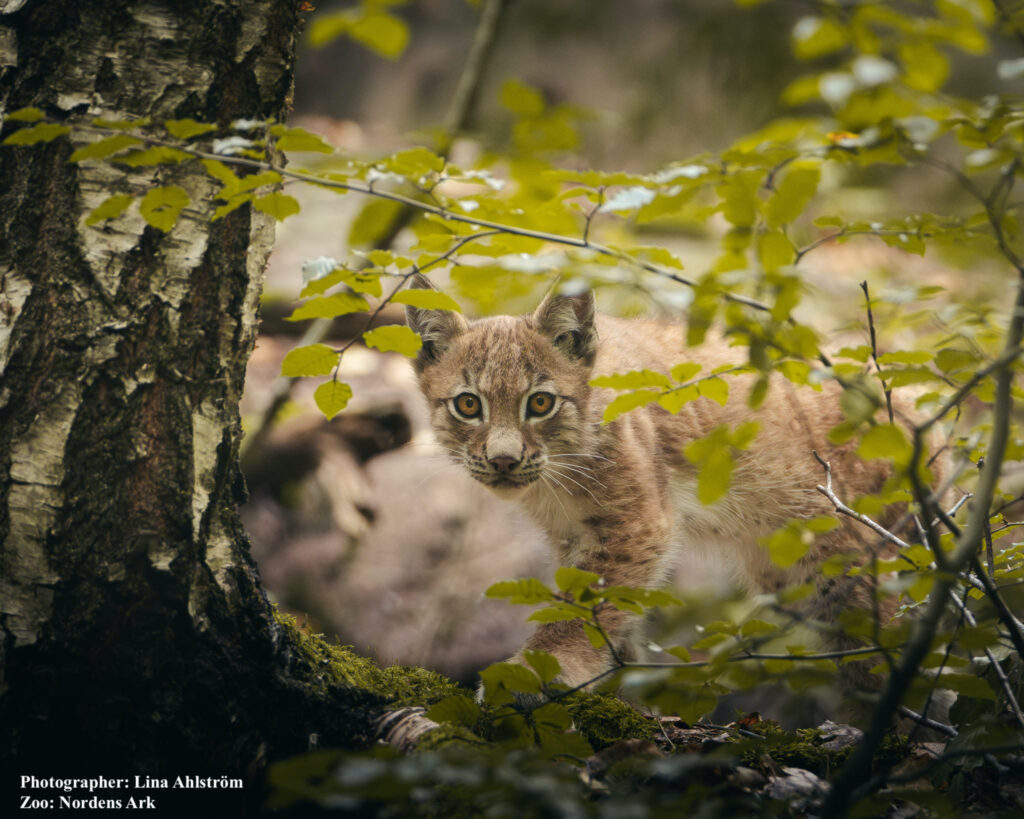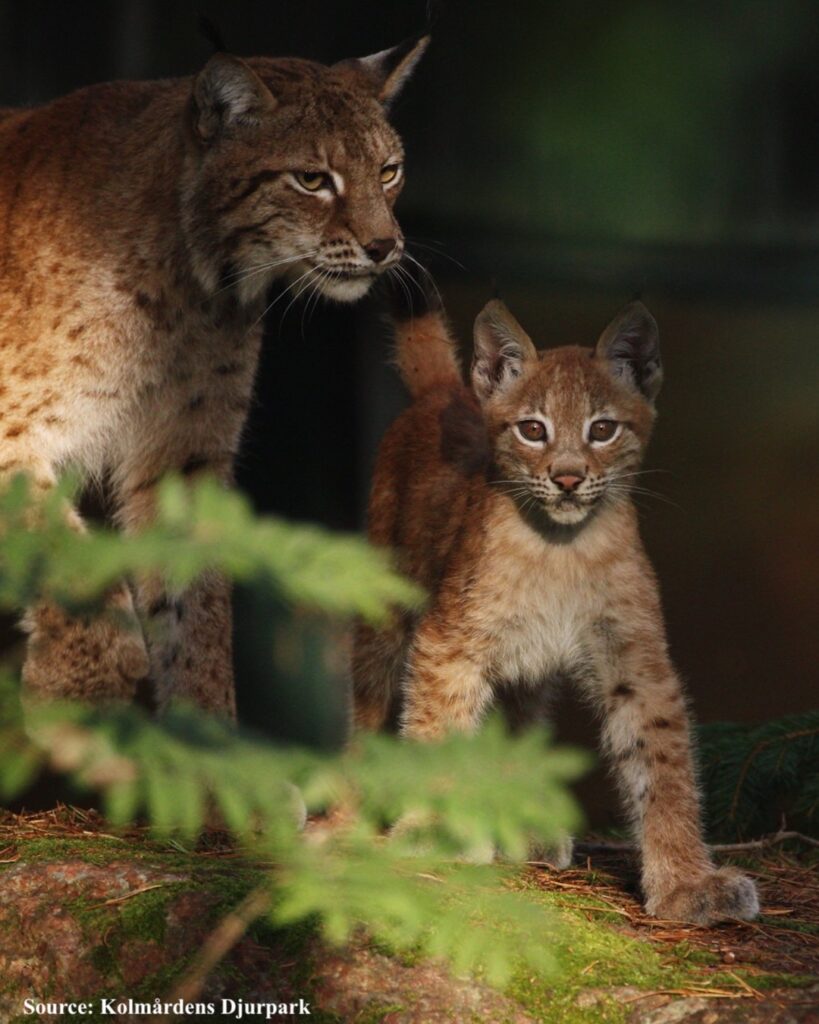Below follows a short summary of the discussion. For the full version, follow the links to the thesis.
The behavior of the lynx differs both within and between individuals, demonstrating that each lynx has their own distinct personality which is further affected by visitor intensity, time of day, weather or other special events such as constructions or feedings. This is visible when examining the differences between high and low season as well as comparing mornings and afternoons. Even pacing, a stereotypy known for its repetitiveness, can vary greatly from day to day. This indicates that in order to get a proper behavioral profile of each individual it is important to measure their behavior over several days.


High season vs. low season
During low season, the lynx were more visible and rested more within sight. This could be both due to an increased sense of comfort due to the lack of visitors, or a side effect of being less out of sight in general. All lynx except one were significantly more visible during low season, when there were little to no visitors, compared to high season. This strengthens the notion that the behavior of lynx is affected by visitors. It makes them more likely to intentionally keep out of sight, less likely to use their whole enclosure and thereby affects their natural range of behaviors. This corresponds with what other papers have also found on the same topic (Ross et al., 2009, Suarez, 2017, Spiezio et al., 2023).
There was a noticeable difference in how the lynx used their space during high and low season, even during opened and closed hours. During high season the lynx spent more time away from the visitors’ areas and more frequently choose resting spots far away. Even though it is desirable from a welfare standpoint that the animal feels less of a need to hide it is nonetheless crucial that they have the opportunity to do so.
Mornings vs. afternoons
All except two lynx were more visible during the afternoon. And all except one paced more in the morning. Lynx are crepuscular so my observation windows fall within their least active time of day. This is important to bear in mind when trying to apply the results of this study on lynx behavior in general. Nonetheless, the observations covered a large portion of their day, so the findings are no less important.
Their behaviors during high season were influenced by zookeeper routines. Some zoos held public feeding session during a specific time which gave the lynx a reason to come into sight. This was not the case during low season which means the lynx had no reason to prefer mornings or afternoons. During low season however there was more morning maintenance in the zoos, such as cars and leaf blowers, which lead to an increase in pacing in at least one of the lynx.

Stereotypies and welfare
The lynx paced more during the mornings and during low season. Males paced more than females. These findings correlate with other studies The increased pacing during the mornings might be explained by that this is naturally an active period for them. In nature this might be when they would patrol their territory, hunt etc. Due to the limits of captivity this need for productivity manifests itself through increased pacing.
Similarly, males in the wild have larger territories than females which could explain their greater need for movement which instead results in pacing when in captivity.
Studies have found that the lynx they observed walked on average 2-14 hours or 7,2 km a day and on days when they did not catch prey they walked even further. I also found that the lynx paced more on the days they were not fed. So perhaps zoos need to accommodate the cats need to walk these distances and create enclosures that make this possible as well as provide some additional enrichment to compensate for the lack of food.
The fact that all except one lynx paced more during low season compared to high season challenges the notion that it is the presence of visitors alone that make lynx perform stereotypies. Likely boredom and lack of stimulation are also causes, something visitors might even be helpful against. It is important to differentiate between what long term causes might increase the risk for stereotypies to arise in an animal and what instantaneous events might cause an animal to start pacing in that moment.
These results show that stereotypies in lynx is a complex problem with many different factors that need to be considered and studied.
Another finding is the importance of natural reproduction and cubs for captive lynx welfare.
Borås zoo had both the largest enclosure and the least visitors per day of the three zoos. Despite this, the lynx at Borås paced by far the most, were the most shy and displayed the smallest range of behaviors. They are also the ones who have never had a single cub, despite living in their enclosure for over 10 years. Despite knowing each other for such a long time, the lynx pair never interacted visibly, other than pacing side by side. Contrastingly, both lynx pairs in the other zoos played together, cuddled and groomed each other. In the two zoos with cubs, all lynx showed a much larger range of behaviors compared to Borås.
Females and cubs stood for most of the social behavior, keeping in mind that in the wild, lynx males leave after conception and never meet their cubs. And yet in captivity they display a lot of positive attention towards them. Social behavior is both a diversion and a sign of welfare. The importance of cubs is evident when seeing how much time both parents devote to their young and how this type of long-term enrichment cannot be artificially replaced. The typical enrichment provided by the zookeepers barely engages the lynx for a few hours, if at all. A cub on the other hand gives full-time entertainment for more than a year.
The clearest example of this is the Kolmården female who was observed pacing before the birth (during the pilot study), stopped completely during high season when the cub was at its most demanding, and slowly started again during low season when the cub was more independent.

Conclusions
Lynx are a complex species with large personal variation among them. They are prone to pacing in captivity and the cause of it is not necessarily easy to determine. To limit the negative effects of visitors zoos should ensure animals enclosures have sufficient space where they can spend time out of sight since this is what many animals do much of the time the parks are open and focus more on enrichment.
Despite laws and guidelines, Swedish zoos are far from standardized, and the law has a lot of room for interpretation. Enclosure design and type of enrichment is left to the best guess of each zoo. Perhaps things that correlate with our knowledge of lynx sensibilities and have been shown to work well in other zoos should be more clearly demanded by law. While not perfect, this may create a baseline and give zoos better ground to build further on.
Finally, I can only strongly recommend to allow the lynx to have their natural reproduction cycle. Based on what I have observed, cubs are the best enrichment a zoo can provide for their lynx as they engage both parents long term and enable a variety of positive behaviors.
Studies like these are needed to better be able to understand lynx needs.
Follow the buttons to my contact info and downloads: